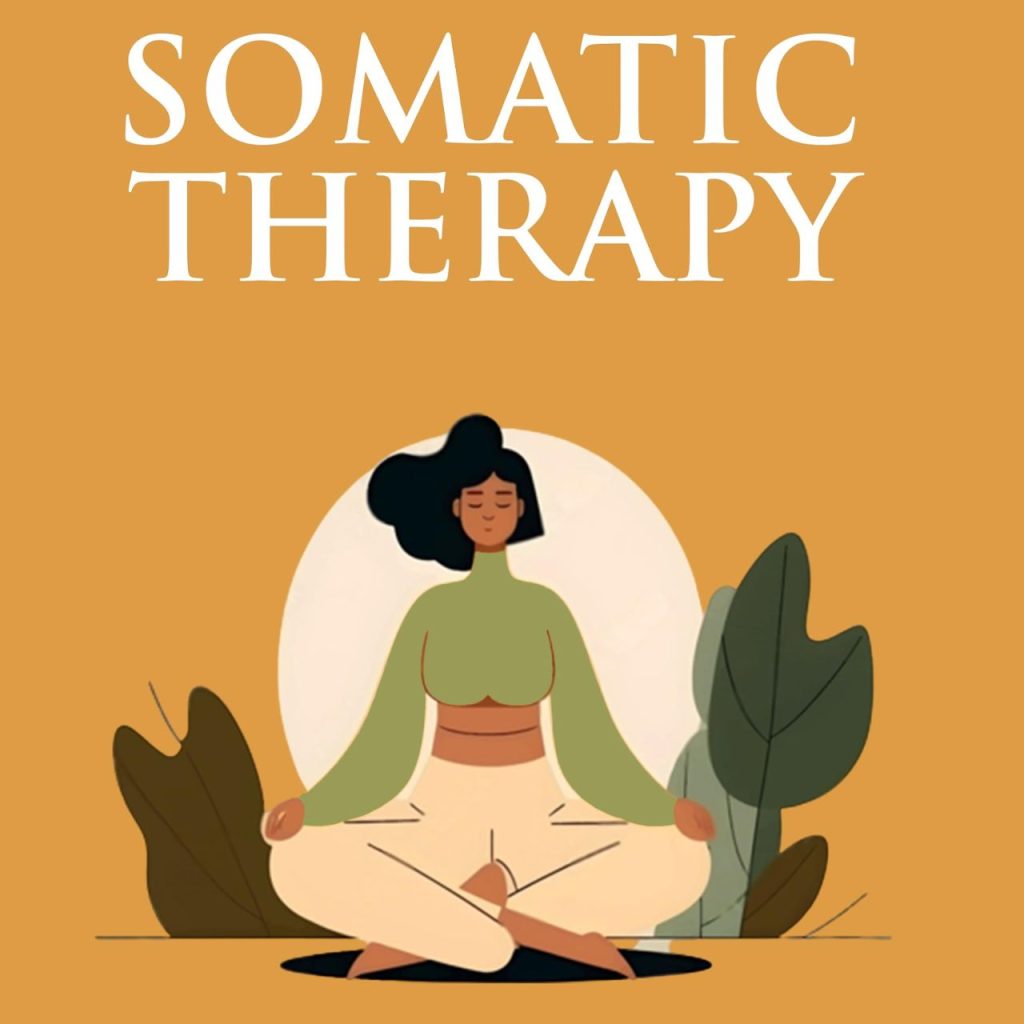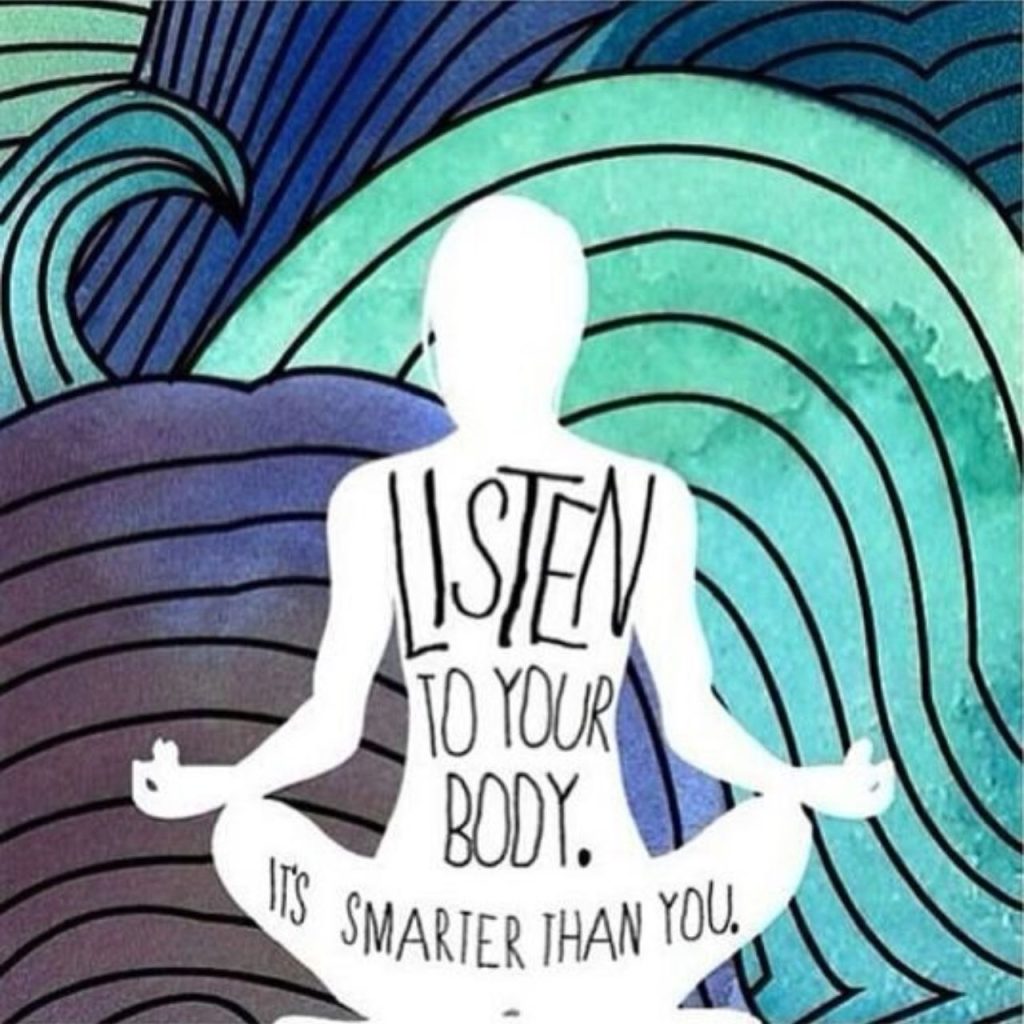Somatic Therapy is a body-centered therapy that forms a body-mind connection and uses psychotherapy and physical therapies for healing. If you have heard the phrase “the body keeps the score” you may also be familiar with somatic therapy. It explores how body processes the painful experiences by applying mind-body healing for trauma recovery.
The approach of somatic therapy is useful for all the survivors of trauma along with the treatment of a wide range of mental health diagnoses. To release the pent-up emotions that hurt the individual’s physical and mental well-being, somatic therapy is a useful approach. Let’s explore all the details about somatic therapy in this comprehensive guide.
What is somatic therapy?

Somatic therapists use mind-body techniques to address the accumulated tension affecting both emotional and physical well-being. Somatic therapy is rooted in somatic psychology and adopts a body-oriented approach to psychological healing. Unlike traditional psychotherapy which primarily focuses on the mind, somatic therapy recognizes the continuous interplay between the mind and the body.
Elizabeth Fedrick, Ph.D, a licensed professional counselor at Evolve Counseling in Arizona, explains that somatic therapy necessitates an awareness of the internal processes within the body. This includes recognizing physiological responses to triggers like headaches or stomach aches that occur throughout the day.
Somatic Therapy vs Talk Therapy
Somatic Therapy emphasizes and treats both the mind and body while talk therapy focuses more on the thought process, perception, and behaviors. Distinguishing itself from talk therapy, somatic therapy positions the body as the essential starting point for the therapeutic process. Practitioners in this field say that negative emotions particularly those stemming from traumatic experiences often become trapped within the body.
When these emotions are not released promptly then they can manifest as psychological disorders or physical ailments such as neck or back pain which may even become severe with time. Chronic pain is more prevalent among individuals diagnosed with post-traumatic stress disorder (PTSD). The somatic techniques include activities such as breathing exercises, meditation, dance, and various forms of body movement.
Types of Somatic Therapy Practices

Somatic Therapy has become more popular in recent years as more people have brushed up against the limit of traditional talk therapy. It can be difficult to comprehend various somatic therapies as most of them are the amalgamation of various therapies.
Somatic Experiencing
Somatic Experiencing is a therapeutic approach that focuses on addressing the body’s responses to trauma. For somatic therapy, practitioners request you to share complete details about your traumatic experiences. It is important that you tell about the physical sensations you experienced during the. In addition, you might be prompted to engage in movements that evoke negative emotions.
The therapist’s objective is to guide you in safely releasing the accumulated energy associated with the trauma. Moreover, this also facilitates a gradual reduction of negative energy impact on your body.
Breathwork
Breathwork is a practice that focuses on purposeful breathing to enhance body awareness and transform it into a deliberate instrument for self-regulation. Through the combined elements of the physical act of breathing and the mental focus on breath, breathwork serves as an effective bridge between the mind and body. The key goal is to foster awareness and offer insights into the functioning of your nervous system and emotions.
Eye-Movement Desensitization Reprocessing (EMDR)
EMDR uses bilateral (left-right) physical stimulation to reduce the intensity and emotional impact of a traumatic memory. During EMDR therapy, clients recall traumatic experiences in brief segments while concurrently concentrating on an external stimulus. The prevalent stimuli include lateral eye movements; though alternative focal points may involve hand tapping or listening to specific sounds.
The key goal is to modify the way the memory is encoded in the brain Through this training the patients may be guided to connect with their body identify the sensations and emotions attached with the sensations.
Hakomi
Hakomi is a form of somatic therapy that places primary focus on mindfulness. It places special emphasis on the capacity to observe the present moment without passing judgment.
The therapeutic process begins with the practitioner creating an environment of gentle acceptance and fostering a space where clients feel at ease. Subsequently, with the modern therapeutic technique the therapist assists the client in recognizing body signals of unconscious beliefs and release them.
In brief, by leveraging mindfulness techniques, practitioners of Hakomi work to uncover and transform deep-seated patterns and beliefs that are affecting the emotional well-being of an individual.
Sensorimotor Psychotherapy
Sensorimotor psychotherapy is an amalgamation of various therapies and integrates elements from psychotherapy, somatic therapy, attachment theory, and neuroscience and also from the Hakomi method. This approach supports clients in safely revisiting traumatic events and addressing any unresolved actions such as the inability to defend against an attacker during the initial event. The goal is to facilitate a sense of completion and closure.
Neurosomatic Therapy
Neurosomatic therapy is the identification of the hidden sources of the tension that results in pain of skeletal system, soft tissues and nervous system. These symptoms often disturb the mind-body continuum. The techniques used in this approach are posture work, massage and exercise to correct the imbalances in the body.
How does somatic therapy works ?
As Somatic therapy place special emphasizes to self-regulate the emotions so this therapy is essential for the higher functioning of an individual. Using specific interventions, it develops awareness of the mind-body connection to release the built up tension, frustration or anger. The key goal is to get rid of all the symptoms that prevents individuals from freely engaging with their lives.
Physical awareness plays the key part is the body psychotherapy. You can get rid of the dark feelings piled up in your chest through this approach. Moreover, centering is also regarded as the foundational practice in the somatic therapy. By building awareness of the muscle, breath and mood you can know yourself better. The third but important part is the body work which involves the motion of patient’s body or face to improve breathing pattern and guided meditation.
How can you benefit from the somatic therapy?

The benefits of somatic therapy can go beyond the talk-therapy. For those struggling with trauma and mental health conditions, somatic therapy is of great importance. Let’s explore what kind of benefits it offer to the individuals.
Infuse Positivity
As you inculcate somatic exercises in your life you start think about life more positively. Like body mind is the creature of the habit. So whenever you experience trauma, the brain and the body react absurdly. The body psychotherapy rewires the brain neural pathways. When you get out of the survival mode you get into the conscious state of the emotional balance. This way you take your life back from the negative energies and start to feel lively.
Self-Insight
Discovering the art of tuning into your body’s signals is a key aspect of this journey. Many messages in the body go unnoticed and perhaps ignored in the pursuit of productivity. By taking a moment to actively listen to your body you open the door to valuable insights into the thoughts and emotions.
Release Tension
To release the stored tension somatic experiencing plays a key role. The mindful somatic exercises help to being awareness to the body and allow people to pinpoint the painful areas. All those who have experienced trauma before in life cannot deal with emotional dysregulation that causes tension in body. The trapped trauma in your body can be effectively dealt with the help of somatic experiencing. Various treatments reset the nervous system so that it recognizes that there is no threat.
Resiliency
Somatic therapy provides you with the essential skillset you need to overcome the recovery setbacks. The skills you will learn over time will be beneficial for you in the long run. By increasing the resiliency, you will be better state of work through the challenges.
Pendulation serves as a method within somatic therapy that offers a systematic approach for transitioning from a stressed state to a calm one. This technique guides individuals in understanding the sensations within their bodies in various states and teaches them how to store calmness. Mastering this approach instills confidence and empowers individuals to navigate life with resilience
Is somatic psychotherapy the right approach for you?
Have you been tense or anxious about yourself and you have no idea why? Yes, you have been plagued with the nagging sense, and its quite normal. There are somatic reactions to what you are experiencing. It is a clear indication that your nervous system is doing the right job and trying to send the messages. Through somatic experiencing your body tells you a tale that goes deeper than the spoken words.
What to look for in a somatic therapist?
The somatic therapist you go for the somatic therapy should possess strong communication skills and be able to convince the client of the somatic therapy with good justifications. Through empathetic and sympathetic behavior you can create a supportive environment to explore the client’s emotions and experiences in detail.
Frequently Asked Questions
Is somatic therapy effective to deal tension?
As the main stream branch of the psychotherapy it is successful in a variety of mental health conditions that include tension, anxiety and stress. There are various examples where adding somatic awareness played a key role.
Can I do somatic therapy at home ?
There are few somatic experiencing methods you can do at home such s the grounding technique that involves the following steps:
Run water on your hands
Move your body in a way that feel comfortable
Focus on your breathing as you inhale and exhale
Relax the different parts of the body
Place categories game with yourself
How does somatic therapy feel?
Somatic therapists guide patients to focus fully on their physical sensations. The mind-body exercises place emphasis on breath work, meditation, grounding and other sensation awareness work.














